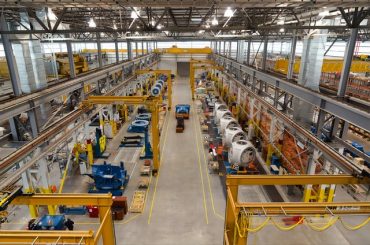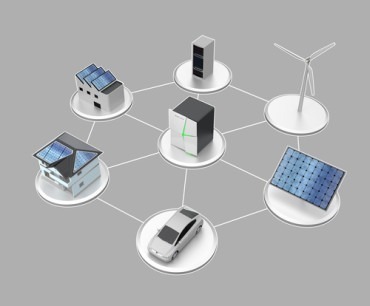
Long-range EVs use high-capacity battery packs, advanced energy management systems, lighter weight materials, and highly efficient electric motors to extend their driving range beyond 300 miles on a single charge.
Electric vehicle (EV) automakers need great flexibility to quickly incorporate new technologies as they emerge and adapt to rapidly changing custom preferences. While automakers have always had to do these things, EV automakers face bigger challenges in dealing with many more new technologies than their internal combustion engine counterparts. One relatively new market segment, long-range EVs, illustrates how broad that technology mix is and how fast the market is changing.
Long-range EVs are electric vehicles that travel significantly greater distances on a single charge compared to the average EV. Their operating range typically exceeds 300 miles, with some going more than 400 miles. These vehicles use high-capacity battery packs, advanced energy management systems, lighter weight materials, and highly efficient electric motors.
Under the hood: Technologies that enable long-range EVs
Long-range EVs blend multiple cutting-edge technologies that work together to maximize efficiency, extend driving range, and provide performance comparable to (or better than) internal combustion vehicles.
The key technologies that enable long-range EVs include:
Advanced Battery Technology: The battery is the heart of an EV, and its capacity and efficiency largely define range. Some of the work being done to power long-range EVs includes:
- Lithium-Ion Batteries: The current standard is high energy density and relatively low weight.
- Solid-State Batteries (emerging): Promise higher energy density, faster charging, and better safety.
- Battery Management Systems (BMS): Monitor and optimize battery health, temperature, and charging/discharging cycles to extend life and range.
Efficient Power Electronics: Power electronics manage energy flow between the battery, motor, and drivetrain. Some of the areas of focus concerning power electronics include:
- Inverters: Convert DC from the battery to AC for the motor. High-efficiency silicon carbide (SiC) inverters reduce energy losses.
- DC-DC Converters: Step down high-voltage battery power for auxiliary systems (lights, infotainment, etc.).
Lightweight Materials & Aerodynamics: Reducing energy consumption helps increase range. Areas where automakers are looking for advantages include:
- Lightweight Materials: Using aluminum, carbon fiber, and advanced plastics reduces vehicle weight.
- Aerodynamic Design: Optimized body shapes reduce drag (e.g., smooth underbodies, flush door handles).
High-Efficiency Electric Motors: Motor type and control systems greatly affect energy use. Automakers are looking at a variety of options here, including:
- Permanent Magnet Synchronous Motors (PMSMs): These are common in EVs due to their efficiency and power density.
- Induction Motors: Used by Tesla in some models; robust and do not require rare earth magnets.
- Motor Control Algorithms: Precision torque and speed control for minimal energy waste.
Thermal Management Systems: Keeps the battery, motor, and cabin at optimal temperatures for performance and longevity. Most work in this area focuses on:
- Heat Pumps: More efficient than resistive heating, especially in cold climates.
- Active Cooling Systems: Use liquid cooling for battery and motor systems.
Intelligent Software and Range Optimization: Software is crucial in squeezing out extra miles. Some areas where automakers hope to boost driving range include:
- Predictive Range Estimation: Uses real-time data (terrain, traffic, weather) to provide an accurate range.
- Eco-driving Modes: Limit acceleration and top speed to conserve energy.
- Over-the-Air Updates: Improve vehicle efficiency and add features without a service visit.
In addition to these areas, EV automakers are also looking at how to use regenerative braking to extend the driving range of their vehicles. Thistechnology converts kinetic energy back into stored electrical energy when applying the brakes, improving efficiency and extending range.
Design and development implications
Long-range EVs require automakers to rethink the entire vehicle lifecycle, from design to production.
The vehicles demand a redesign of vehicle architecture and an even greater emphasis on improved vehicle aerodynamics. Automakers must also radically change their thinking about materials. Their designs must incorporate lightweight, high-strength materials to offset the greater battery weight of long-range EVs.
These new vehicles also require significant development changes. Automakers must revamp their battery and thermal systems engineering to ensure they can access the latest developments in these areas. Additionally, automakers must focus on software-centric development in areas like powertrain management and energy recovery.
Naturally, there will need to be production changes. EV production lines must integrate new battery modules and their assembly. They must work with new supply chain partners for batteries, high-voltage components, and power electronics. Moreover, they will likely need to retool and redesign their assembly lines and plants.






